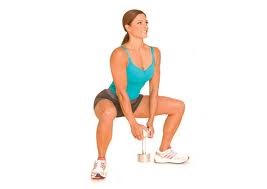Avers and Brown, White Paper: Strength Training for the Older Adult Journal of Geriatric Physical Therapy; 2009; 32, 4;
Strength Training Prescription: Establishing a Baseline Copy
A common method to determine how hard someone should be working is to figure out their 1-repetition maximum (1RM): this is the maximum load they can work under to do one good repetition before failure (e.g., cannot do any more with good form).
A 1RM may not be a feasible for your exercise scenario. You could instead use a 10RM (repetition maximum). Like the 1-rep max, this is a load where the person can do 10 repetition before failure. A 10RM is about 80% of a 1RM.
If they person can do 20 repetitions before failure (i.e., their 20RM) then they are working at less than 60% of their 1RM.
NOTE: Depending on the exercise, you might not need to use weights to determine their rep max. For example, if you are assessing baseline leg strength you could ask the person to stand up and sit down out of a chair without using their arms as many times as they can.
Remember – intensity is relative to the person’s abilities NOT to a set weight. If the person asks “How much can I lift?” it really depends on their baseline ability (i.e., their 1 or 10RM).
Also remember – re-assess baseline frequently, it will change as the person’s strength improves and so too should the intensity of their strength exercises.
